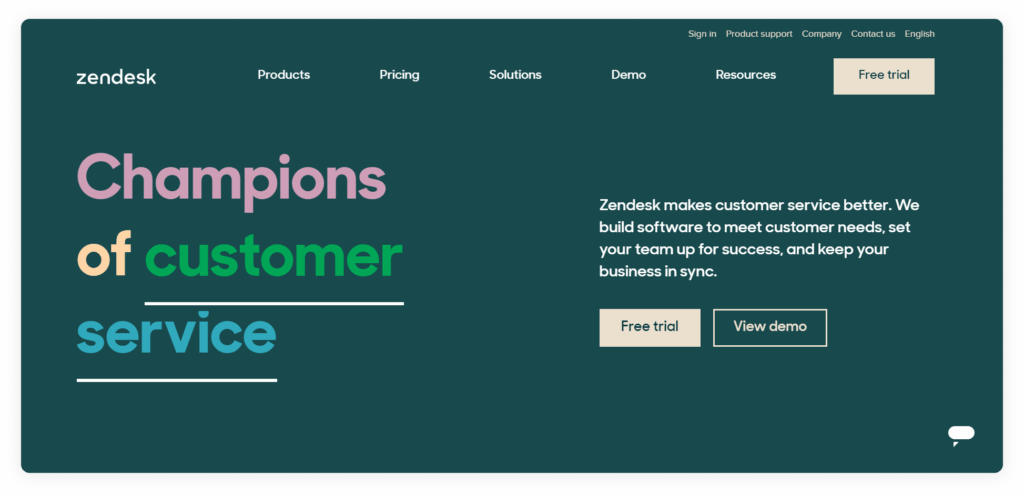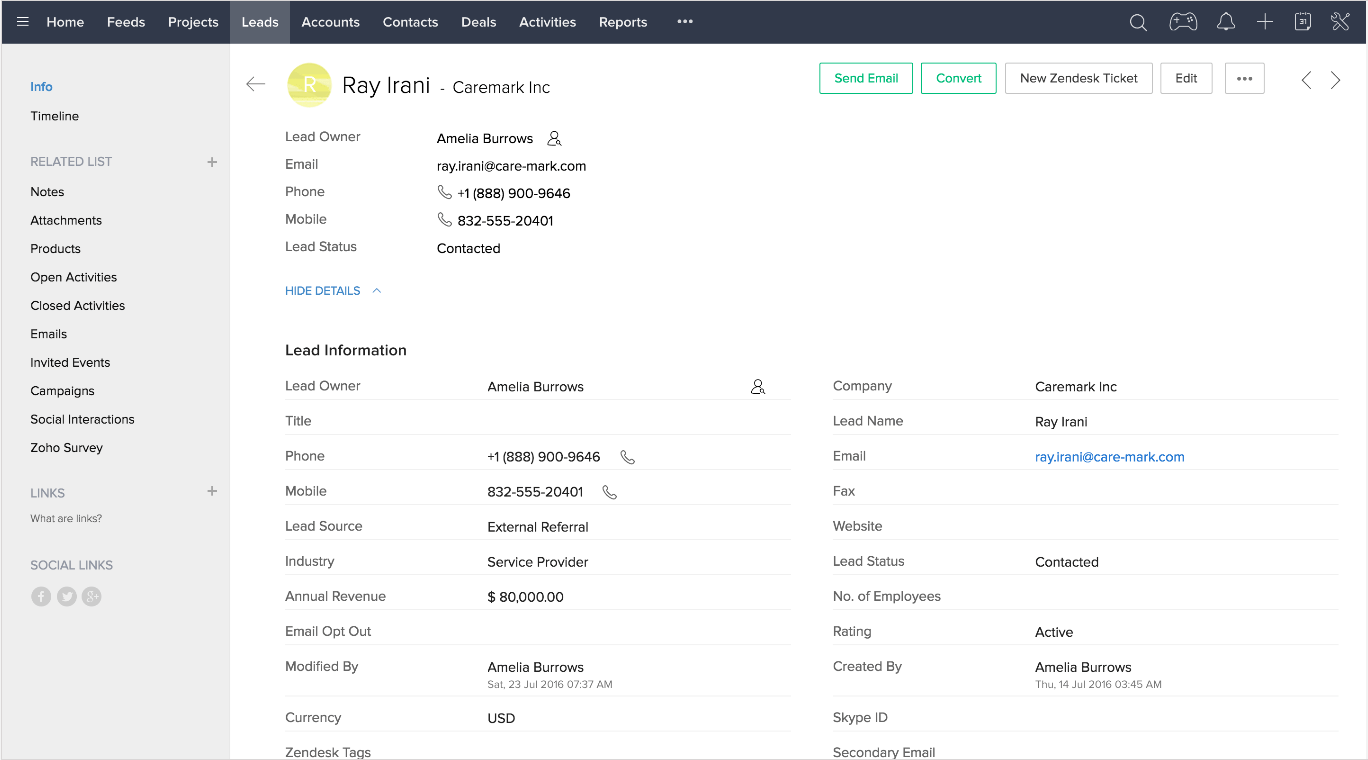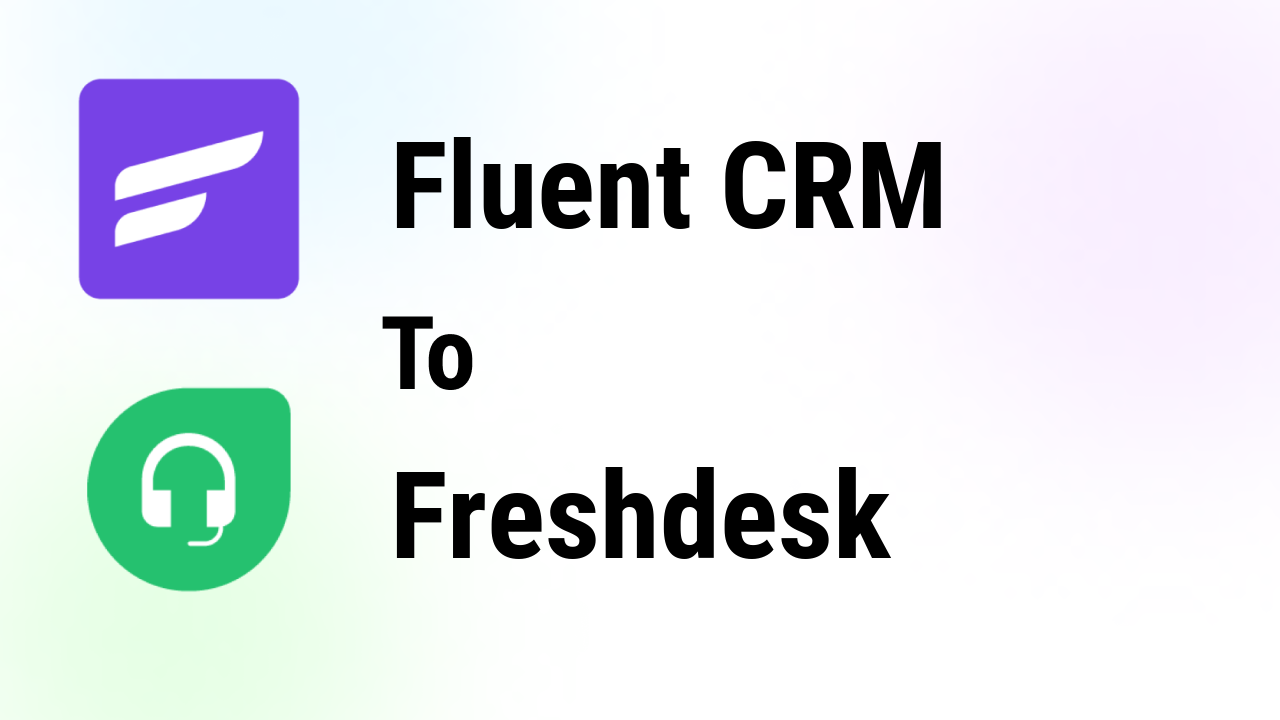
Unlock Customer Success: A Deep Dive into CRM Integration with Zendesk
In today’s dynamic business landscape, providing exceptional customer experiences is no longer a luxury; it’s a necessity. Customers expect seamless interactions, personalized support, and quick resolutions. To meet these demands, businesses are increasingly turning to Customer Relationship Management (CRM) systems and help desk platforms like Zendesk. But simply having these tools isn’t enough. The real magic happens when you integrate them, creating a unified ecosystem that empowers your teams and delights your customers. This article delves deep into the world of CRM integration with Zendesk, exploring its benefits, how to implement it, and the best practices to ensure success.
Why CRM Integration with Zendesk Matters
Imagine this: a customer calls your support team, and the agent has no context about their past interactions, purchases, or preferences. The agent has to ask the customer to repeat information, leading to frustration and wasted time. Now, picture a different scenario: the agent has instant access to the customer’s entire history, allowing them to provide personalized, efficient, and proactive support. This is the power of CRM integration with Zendesk.
Integrating your CRM with Zendesk offers a wealth of benefits, including:
- Enhanced Customer Experience: Provide personalized support by having access to customer data within Zendesk. Agents can quickly understand customer needs and offer tailored solutions, leading to higher satisfaction and loyalty.
- Improved Agent Productivity: Eliminate the need to switch between systems. Agents can access all the information they need within Zendesk, saving time and reducing errors.
- Increased Efficiency: Automate workflows and processes, such as ticket creation, data entry, and follow-ups. This frees up agents to focus on more complex issues and strategic initiatives.
- Better Data Insights: Gain a 360-degree view of your customers by combining data from your CRM and Zendesk. This allows you to identify trends, understand customer behavior, and make data-driven decisions.
- Reduced Costs: By streamlining processes and improving efficiency, CRM integration can help you reduce support costs and optimize resource allocation.
- Streamlined Sales and Support Alignment: Break down silos between sales and support teams. Sales can see support interactions, and support can see sales opportunities, leading to better collaboration and a more cohesive customer experience.
Key Benefits in Detail
Let’s delve deeper into some of the key advantages of integrating your CRM with Zendesk:
Personalized Customer Support
The foundation of a great customer experience is personalization. By integrating your CRM with Zendesk, you empower your support agents with a complete view of each customer. This includes their purchase history, past support tickets, preferences, and any other relevant information stored in your CRM. Armed with this knowledge, agents can address customers by name, anticipate their needs, and offer tailored solutions. This level of personalization fosters a sense of value and builds stronger customer relationships.
Seamless Agent Workflow
Imagine the frustration of switching between multiple applications to gather information. It’s time-consuming, prone to errors, and detrimental to agent productivity. CRM integration with Zendesk solves this problem by providing agents with a unified interface. All the customer data they need is accessible within Zendesk, eliminating the need to navigate between different systems. This seamless workflow allows agents to resolve issues faster, improve accuracy, and focus on delivering exceptional support.
Automated Processes and Increased Efficiency
Automation is a game-changer in customer service. By integrating your CRM and Zendesk, you can automate a variety of tasks, such as:
- Ticket Creation: Automatically create tickets in Zendesk based on CRM events, such as a new customer inquiry or a change in account status.
- Data Synchronization: Keep customer data synchronized between your CRM and Zendesk, ensuring that both systems have the most up-to-date information.
- Workflow Automation: Trigger workflows in Zendesk based on CRM data, such as sending a welcome email to a new customer or escalating a ticket based on priority.
- Follow-up Reminders: Automate follow-up reminders to agents based on specific events or deadlines.
These automations free up agents from repetitive tasks, allowing them to focus on more complex issues and strategic initiatives, ultimately boosting overall efficiency.
Improved Data Insights and Reporting
Data is the lifeblood of any successful business. CRM integration with Zendesk provides valuable insights into your customers, your support operations, and your overall business performance. By combining data from both systems, you can:
- Identify Customer Trends: Analyze customer behavior, identify common issues, and proactively address them.
- Measure Support Performance: Track key metrics, such as ticket resolution time, customer satisfaction, and agent productivity.
- Optimize Support Processes: Identify areas for improvement and refine your support processes to enhance efficiency and effectiveness.
- Gain a 360-Degree View of the Customer: Understand the complete customer journey, from initial contact to ongoing support, and use this information to improve the customer experience.
These insights empower you to make data-driven decisions, optimize your support operations, and drive business growth.
Choosing the Right CRM for Zendesk Integration
The success of your CRM integration with Zendesk hinges on choosing the right CRM system. Consider the following factors when making your decision:
- Integration Capabilities: Does the CRM offer a native integration with Zendesk, or will you need to use a third-party integration tool? Native integrations typically offer a more seamless experience and more advanced features.
- Features and Functionality: Does the CRM offer the features and functionality you need to manage your customer relationships effectively? Consider features such as contact management, sales automation, marketing automation, and reporting.
- Scalability: Can the CRM scale to meet your future needs as your business grows?
- Pricing: Does the CRM fit within your budget? Consider the total cost of ownership, including licensing fees, implementation costs, and ongoing maintenance.
- Ease of Use: Is the CRM easy to use and navigate? Consider the user experience and the learning curve for your team.
- Customer Support: Does the CRM provider offer good customer support?
Some of the popular CRM systems that integrate well with Zendesk include:
- Salesforce: A leading CRM platform with robust features and a wide range of integration options.
- HubSpot CRM: A user-friendly CRM with a free version and a strong focus on marketing and sales automation.
- Zoho CRM: A comprehensive CRM with a wide range of features and affordable pricing.
- Microsoft Dynamics 365: A powerful CRM platform with a focus on enterprise-level businesses.
- Pipedrive: A sales-focused CRM designed to help sales teams manage their pipelines and close deals.
Research each CRM system carefully and choose the one that best meets your specific needs and requirements.
Step-by-Step Guide to Implementing CRM Integration with Zendesk
Implementing CRM integration with Zendesk can seem daunting, but with a structured approach, you can ensure a smooth and successful implementation. Here’s a step-by-step guide:
- Plan and Define Your Goals: Before you start, clearly define your goals for the integration. What do you want to achieve? What data do you want to synchronize? What workflows do you want to automate? Having clear goals will help you make informed decisions throughout the implementation process.
- Choose Your Integration Method: Determine the best integration method for your needs. You can either use a native integration, a third-party integration tool, or custom development. Native integrations are usually the easiest to set up, while custom development offers the most flexibility.
- Connect Your CRM and Zendesk: Follow the instructions provided by your CRM and Zendesk to connect the two systems. This typically involves entering your login credentials and configuring the connection settings.
- Map Your Data Fields: Map the data fields between your CRM and Zendesk. This ensures that data is synchronized correctly between the two systems. For example, you’ll need to map the “email address” field in your CRM to the “email address” field in Zendesk.
- Configure Workflows and Automations: Configure workflows and automations to streamline your support processes. For example, you can set up a workflow to automatically create a ticket in Zendesk when a new lead is created in your CRM.
- Test Your Integration: Thoroughly test your integration to ensure that data is being synchronized correctly and that workflows are working as expected. Create test cases and run them to verify the functionality.
- Train Your Team: Train your team on how to use the integrated systems. Provide them with the necessary documentation and support to ensure they can effectively utilize the new features and functionalities.
- Monitor and Optimize: Continuously monitor the performance of your integration and make adjustments as needed. Analyze your data and identify areas for improvement.
Best Practices for Successful CRM Integration with Zendesk
To maximize the benefits of your CRM integration with Zendesk, follow these best practices:
- Start Small and Iterate: Don’t try to implement everything at once. Start with a small set of features and gradually expand the integration over time. This allows you to test and refine your setup before rolling it out to your entire team.
- Prioritize Data Quality: Ensure that your data is clean, accurate, and up-to-date in both your CRM and Zendesk. This is crucial for the success of your integration. Regularly review and update your data to maintain its integrity.
- Establish Clear Ownership: Assign clear ownership for the integration. Who is responsible for managing the integration, troubleshooting issues, and ensuring its ongoing success?
- Provide Comprehensive Training: Invest in comprehensive training for your team. Make sure they understand how to use the integrated systems and how to leverage the new features and functionalities.
- Document Everything: Document your integration setup, including your goals, configuration settings, and any custom code. This documentation will be invaluable for troubleshooting and future updates.
- Monitor Performance and Make Adjustments: Regularly monitor the performance of your integration and make adjustments as needed. Track key metrics, such as ticket resolution time, customer satisfaction, and agent productivity, to identify areas for improvement.
- Stay Updated: Keep your CRM and Zendesk software up to date. Software updates often include bug fixes, performance improvements, and new features that can enhance your integration.
- Leverage Automation Wisely: While automation is powerful, don’t overdo it. Focus on automating tasks that are repetitive and time-consuming. Avoid automating tasks that require human judgment or empathy.
- Focus on the Customer Experience: Always keep the customer experience in mind. The goal of CRM integration with Zendesk is to improve the customer experience, so make sure your integration is designed with the customer in mind.
Troubleshooting Common Issues
Even with careful planning, you may encounter some common issues during CRM integration with Zendesk. Here’s how to troubleshoot them:
- Data Synchronization Issues: If data is not synchronizing correctly, check the following:
- Connection Settings: Verify that the connection settings between your CRM and Zendesk are correct.
- Data Mapping: Ensure that the data fields are mapped correctly.
- Permissions: Verify that the integration has the necessary permissions to access the data.
- Logs: Check the logs for any error messages.
- Workflow Issues: If your workflows are not working as expected, check the following:
- Triggers: Verify that the triggers are configured correctly.
- Actions: Ensure that the actions are configured correctly.
- Conditions: Verify that the conditions are met.
- Order: Make sure the order of your actions is correct.
- Performance Issues: If you experience performance issues, such as slow loading times, consider the following:
- Data Volume: Reduce the amount of data being synchronized.
- Integration Tool: Choose a more efficient integration tool.
- Hardware Resources: Ensure that your servers have sufficient resources.
- User Permissions Issues:
- Review user roles and permissions: Ensure that users have the correct level of access to both the CRM and Zendesk to perform their tasks.
- Verify integration user permissions: The integration user (the account used to connect the CRM and Zendesk) must have the appropriate permissions to access and modify data in both systems.
If you’re still experiencing issues, consult the documentation for your CRM and Zendesk, or contact their respective support teams.
The Future of CRM and Zendesk Integration
The integration of CRM systems and help desk platforms like Zendesk is constantly evolving. As technology advances, we can expect to see even more sophisticated integrations with enhanced features and functionalities. Here are some trends to watch:
- Artificial Intelligence (AI) and Machine Learning (ML): AI and ML will play an increasingly important role in CRM and Zendesk integration. Expect to see AI-powered chatbots that can handle customer inquiries, AI-driven analytics that can provide deeper insights into customer behavior, and ML-powered automation that can streamline support processes.
- Enhanced Personalization: Businesses will continue to strive for greater personalization in their customer interactions. CRM and Zendesk integrations will leverage data to provide even more tailored support experiences.
- Increased Automation: Automation will become more sophisticated, with the ability to handle more complex tasks and workflows.
- Seamless Omnichannel Support: Businesses will continue to integrate various communication channels, such as email, chat, phone, and social media, into a unified support platform.
- Focus on Data Security and Privacy: Data security and privacy will remain a top priority. Integrations will need to comply with data privacy regulations, such as GDPR and CCPA.
By staying informed about these trends, you can ensure that your CRM and Zendesk integration is future-proof and positioned to deliver exceptional customer experiences.
Conclusion
CRM integration with Zendesk is a powerful strategy for businesses looking to enhance customer experiences, improve agent productivity, and drive business growth. By choosing the right CRM, following a structured implementation process, and adhering to best practices, you can unlock the full potential of your integrated systems. As technology continues to evolve, the integration of CRM and help desk platforms will become even more critical for businesses seeking to thrive in the competitive landscape. Embrace the power of integration and transform your customer support into a strategic advantage.
By implementing the steps outlined above and keeping abreast of the latest trends, your business can harness the full potential of CRM integration with Zendesk, leading to a more efficient, customer-centric, and ultimately, more successful operation. Remember that the journey doesn’t end with the initial integration; continuous monitoring, optimization, and adaptation are key to long-term success.

